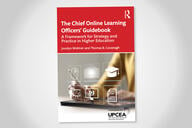You have /5 articles left.
Sign up for a free account or log in.

The City University of New York is reducing barriers to transfer for students moving from community colleges to senior colleges through strategic collaboration with faculty and tech innovations.
Erik McGregor/LightRocket/Getty Images
Upward transfer, the movement from a two-year institution to a four-year institution, can be incredibly difficult for students to navigate.
While 80 percent of community college students enter college with aspirations of completing a bachelor’s degree, only 16 percent have finished a four-year program six years after transferring.
A 2017 U.S. Government Accountability Office study found the average student transferring from a two-year to a four-year institution loses 26 percent of their credits, which can slow their progress to a degree and increase the costs associated with their credential.
To address these concerns, the City University of New York rolled out the CUNY Transfer Initiative, which allows students to move from a community college to a four-year program more seamlessly.
The initiative, which will apply to current students transferring for fall 2025, will reduce credit loss and establish consistency across the system for the 15,000 CUNY students who participate in upward transfer each year.
A National Picture
While transfer remains difficult, recent data signal improvement among transfer completion. In fall 2023, the National Student Clearinghouse Research Center reported upward transfer grew 7.7 percent year over year. The number of community college students who earned an associate degree, bachelor’s degree or certificate within six years grew to 35.2 percent among the 2016 entering cohort, up 2.1 percentage points from 2014.
The background: The CUNY system first integrated in 1961, unifying the seven community colleges with 11 senior colleges and seven graduate or professional institutions. Despite sharing infrastructure and information, course requirements have remained varied, which has penalized transfer students, according to a CUNY press release.
Around half (47 percent) of CUNY community college transfers lose some credits, with four credits being the median, which is worth around $1,220 in tuition.
In 2023, the CUNY Board of Trustees unanimously passed a resolution charging the university with making student transfer seamless, with little to no credit loss to the student.
Working together: System leaders convened groups of faculty members, arranged by disciplines, to align learning outcomes across course catalogs, reducing the need for students to retake similar courses or be denied credit for the work they’d completed at a different institution.
One of the key considerations was asking faculty to look not at courses like apples to apples, but as competencies or learning outcomes for the first half of the major versus the last, creating general agreement among participants, says University Provost Alicia M. Alvero. The process did encourage some faculty members to shift their course content if it was an outlier in what would be accepted.
“Some [faculty members] just started organically making changes to the curriculum, because they realize how close they were to universal transferability at the course level, which would be ideal,” Alvero says.
Now, transfer pathways through majors are not institution-specific, allowing learners to have more opportunities as they progress into senior colleges, Alvero explains.
Work group contributors received a stipend, thanks to funds from the state.
Tech tools: CUNY leaders implemented a new tool this spring to provide visibility for learners to make educated decisions about transfer.
On Jan. 21, the system rolled out updates to CUNYfirst, short for Fully Integrated Resources and Services Tool, which shows learners how their existing credits transfer after being admitted to a different CUNY institution, as well as how they can build their schedule and audit their degree.
“Previously, each campus had a point person who made this change manually for each transfer student after a student was admitted, requiring students to advocate for themselves when there were delays and adding stress as they were working to make important academic decisions about their future,” according to the press release.
Students were able to audit their unofficial transcript using CUNY Transfer Explorer (CUNY T-Rex) but this was separate and didn’t allow for direct comparison between various institutions, Alvero says.
The impact: After the CUNYfirst update launched, 18,850 students could see their transferred credits before enrolling, giving them more options in the decision to continue their degree program.
Faculty members also aligned six of the most common majors—accounting, computer science, biology, math, psychology and sociology—allowing 75 percent of transferring students to carry over most credits in their majors. Now, 300 courses or blocks of courses are universally equivalent across colleges.
What’s next: In the future, the system will continue to convene groups of faculty to create a clear transfer pathway through course requirements as well as ensure new courses and majors fall under articulation agreements. CUNY T-Rex will be instrumental in this work, with a new feature to allow faculty to make requests or changes to course equivalencies in the shared database.
Keep Reading
Interested in more work on transfer? Check out these articles.
- Six initiatives to boost transfer student success
- Increasing transfer pathway options for Texas students
- Portal promotes successful transfer from community college to a private university
- Report: Six ways to strengthen transfer pipelines
- A transfer center to improve workflow internally
- Detailed guides help community college students transfer
“If somebody wants to make a change, they get a warning that says, ‘This course is part of an articulation agreement,’ or ‘This course is part of this block of courses,’” Alvero says. “So that way we can embed some security measures in place so that we can inform faculty [before they make changes].”
Leaders are also developing an artificial intelligence tool to identify course equivalencies for new courses at the point of entry, versus assigning students an elective credit that they have to appeal.
Additional state funds will be allocated to a transfer peer mentor program and faculty fellowships focused on transfer. CUNY plans to hire someone at the system level to oversee all elements of transfer and lead additional programs or interventions.




